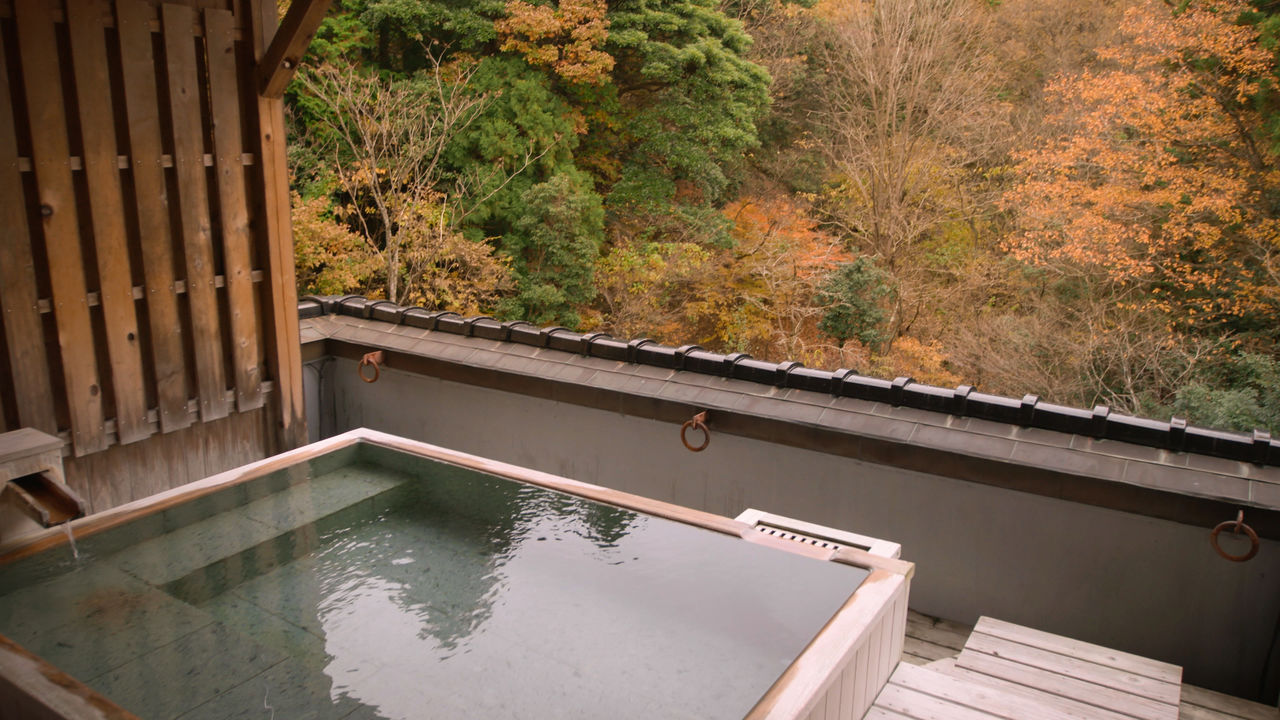
Yamanaka: Soothing Waters and Traditional Townscapes in Ishikawa
JapanIn video
Guide to Japan Culture- English
- 日本語
- 简体字
- 繁體字
- Français
- Español
- العربية
- Русский
Yamanaka, one of the three leading hot springs in Kaga, Ishikawa Prefecture, is said to have been discovered around 1,300 years ago by Gyōki, a high-ranking priest of the Nara period (710–94). The famous itinerant haiku poet Matsuo Bashō (1644–94) stopped at Yamanaka during his travels and declared the hot springs there to be among the top three in all of Japan, the other two being Arima and Kusatsu. In his chronicle of his travels, Oku no hosomichi (trans. The Narrow Road to the Deep North), Bashō praised the Yamanaka hot springs with a poem declaring their waters to be more than equal to the medicinal properties ascribed to the chrysanthemum: Yamanaka ya / kiku wa taoraji / yu no nioi (Ah, Yamanaka! / No need to pick chrysanthemums / with waters so fragrant.).
Nestled deep in the mountains, the spring district of Yamanaka stretches along the steep banks of the Daishōji River. Nearby is the Kakusen Gorge, where tourists flock to see the gorgeous autumn foliage.
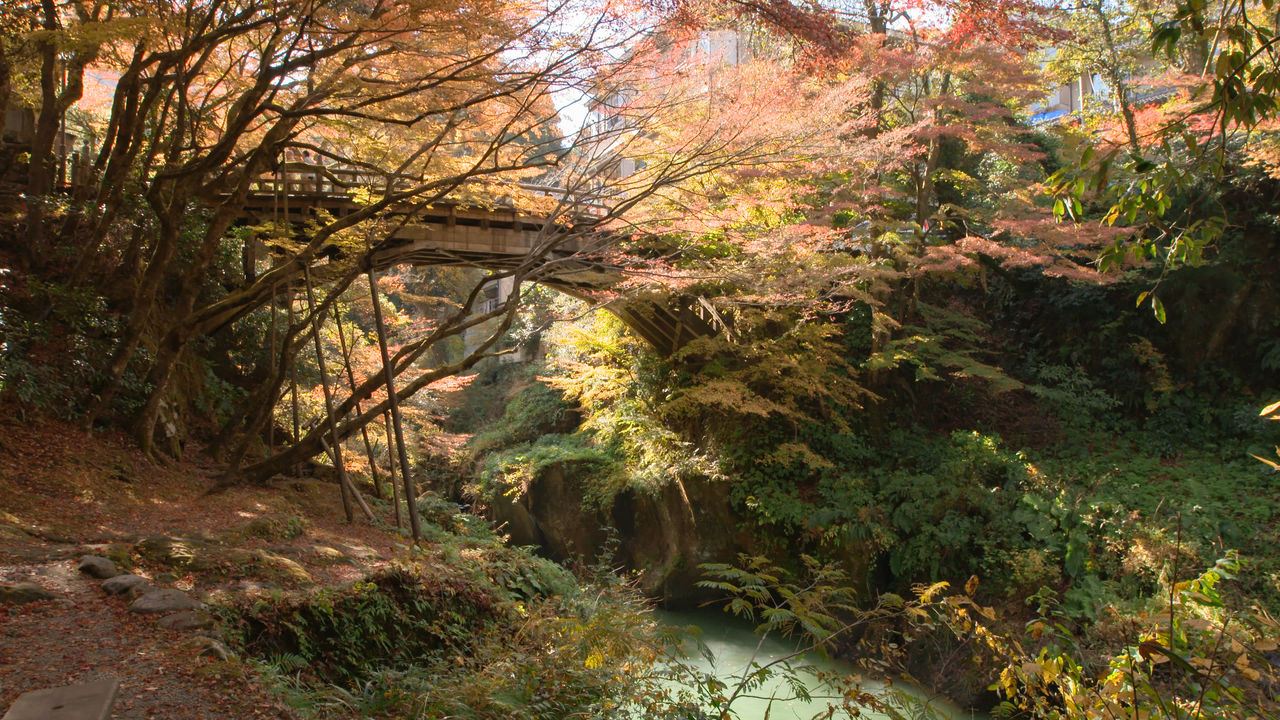 The Kōrogi Bridge over the Kakusen Gorge.
The Kōrogi Bridge over the Kakusen Gorge.
The lovely autumn foliage of the Kakusen Gorge can be viewed from the Kōrogi Bridge (Cricket Bridge), built completely of cypress wood, and from the Ayatori Bridge, famous for its avant-garde form, designed by Teshigahara Hiroshi—a multitalented filmmaker and stage-set designer who was also the third grand master of the Sōgetsu school of ikebana.
Yamanaka boasts a number of unique inns with soothing baths specifically designed to make the most of the beautiful natural setting of the river gorge.
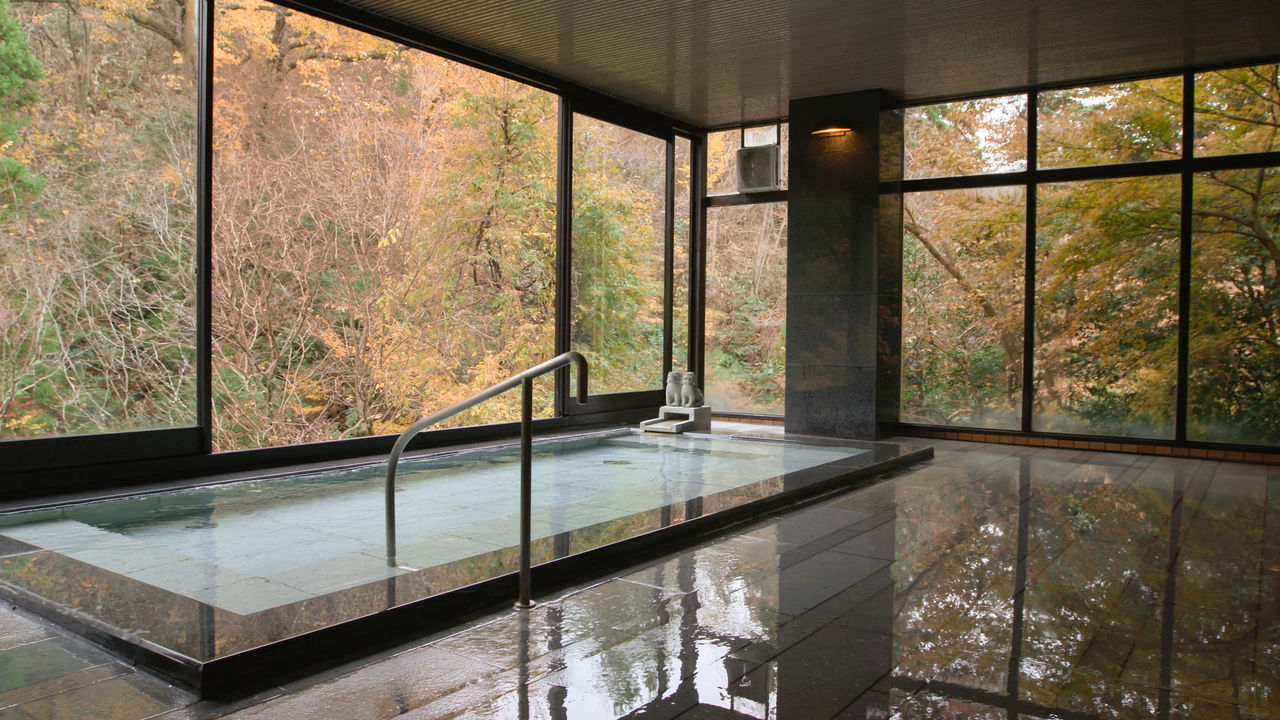 The large main bath at Kayōtei, an exclusive inn with only 10 rooms on its extensive grounds.
The large main bath at Kayōtei, an exclusive inn with only 10 rooms on its extensive grounds.
Communal sōyu baths (differentiated from the uchiyu, those located inside private establishments) are available in the middle of the town. The Kiku-no-yu communal bath is unusual in that it has separate buildings for men and women. The men’s bath is a solid, heavy structure built in the mid-eighth-century Tenpyō style while the women’s bath is an elegant feminine building with delicate curving lines. Next to the women’s bath is the Yamanaka-za, a playhouse where visitors are entertained with renditions of traditional local folk songs called Yamanaka-bushi and local geisha dance performances.
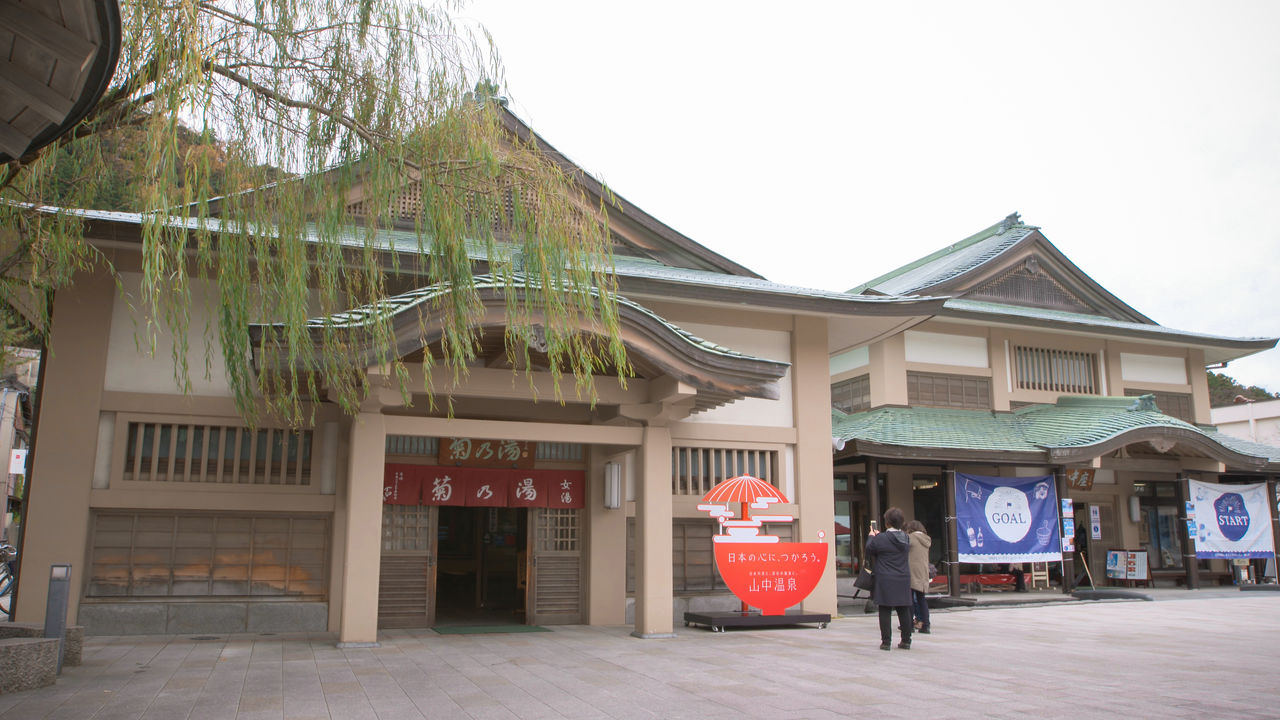 The Kiku-no-yu women’s bath on the left and the Yamanaka-za playhouse on the right.
The Kiku-no-yu women’s bath on the left and the Yamanaka-za playhouse on the right.
The Yuge Kaidō, extending roughly 600 meters from Kiku-no-yu to the vicinity of the Kōrogi Bridge, is a broad avenue lined with pleasant cafes and shops selling Yamanaka lacquerware and Kutaniyaki ceramics.
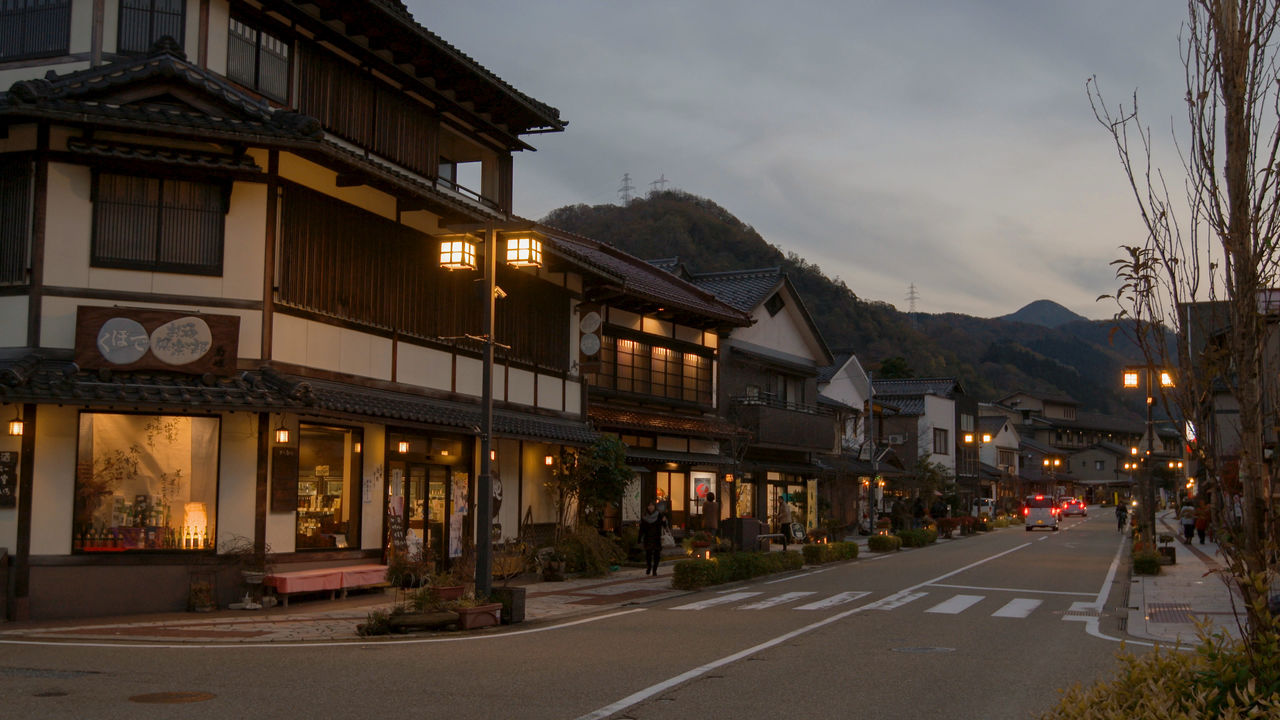 Visitors stroll along the sidewalks of the Yuge Kaidō, window shopping and searching for local souvenirs.
Visitors stroll along the sidewalks of the Yuge Kaidō, window shopping and searching for local souvenirs.
Access: Approx. 25 minutes by limited express on the JR Hokuriku Main Line from Kanazawa Station to Kaga-Onsen Station. From there, approx. 30 minutes by bus on the Kaga Onsen Bus Yamanaka Line to the Yamanaka Onsen Bus Terminal, or approx. 20 minutes by taxi.
(Originally written in Japanese. Created in cooperation with Kanazawa Cable Television. Banner photo: View of the autumn foliage from the Kayōtei open-air bath.)